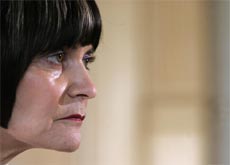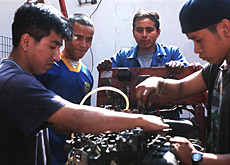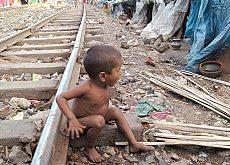Switzerland turns its gaze beyond the EU

The government says it wants to increase cooperation with the United States and other important partners, although the European Union will remain the priority.
In a strategy document released on Thursday, the foreign ministry showed more restraint in the issue of development aid, ruling out an increase in the budget.
Foreign Minister Micheline Calmy-Rey said the change of focus was merely a refinement of the current foreign policy strategy.
Although the EU was and would remain Switzerland’s most important political and economic partner, “we must pay more attention to the rest of the world”.
The foreign ministry said that in the past five years the world had changed: the dominance of the US had been confirmed, the EU had expanded, Switzerland had joined the United Nations and had concluded a second set of bilateral agreements with the EU.
The cabinet gave its approval to closer cooperation with the US – Switzerland’s second-biggest trading partner after the EU – at a meeting on Wednesday.
Besides working together to fight terrorism and corruption, Switzerland hopes to conclude two agreements with Washington – one on free trade and the other on customs cooperation.
The foreign ministry paper said relations with other important partners – Russia, China, Japan, Brazil, India, South Africa and the Balkan countries – would also be put on a new footing.
Development aid
The cabinet also considered another aspect of foreign policy – development aid – during its session.
While ruling out any immediate increase in its contribution to fighting poverty, it decided to include part of the cost of accepting asylum seekers in its development aid budget.
This move means that Switzerland will now spend more than 0.4 per cent of gross domestic product on development aid – a goal which has not previously been reached.
Switzerland plans to give SFr1.46 billion ($1.19 billion) in aid in 2006, SFr1.52 billion in 2007 and SFr1.56 billion in 2008.
The centre-right parties welcomed the government’s policy shift towards the US, but said it should not come at the expense of Europe.
The Christian Democrats said it was important to have an active foreign policy and to forge new partnerships, while the Radicals stressed the need to extend trade with the US, followed by China and India.
The rightwing Swiss People’s Party also praised the change in direction, saying that although European partners remained important the “rapidly growing markets” could not be neglected.
But there was criticism of the government from the Left and aid groups. The Social Democrats accused the cabinet of putting its budget above development policy.
For its part, the coalition of Swiss aid agencies regretted the use of “statistical tricks” to make it appear as if Switzerland had raised its development budget, while in fact making no more money available.
swissinfo with agencies
The EU and UN are calling for development aid to reach 0.56% of GDP by 2010 and 0.7% by 2015.
Currently Switzerland spends 0.37% of GDP on development aid.
If the cost of accepting asylum seekers is included in this amount it rises to 0.41%.
Switzerland plans to spend SFr1.46 billion on aid in 2006, SFr1.52 billion in 2007 and SFr1.56 billion in 2008.

In compliance with the JTI standards
More: SWI swissinfo.ch certified by the Journalism Trust Initiative


You can find an overview of ongoing debates with our journalists here . Please join us!
If you want to start a conversation about a topic raised in this article or want to report factual errors, email us at english@swissinfo.ch.